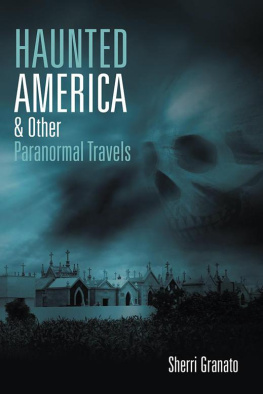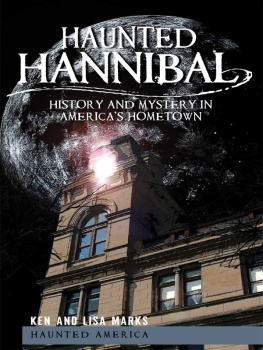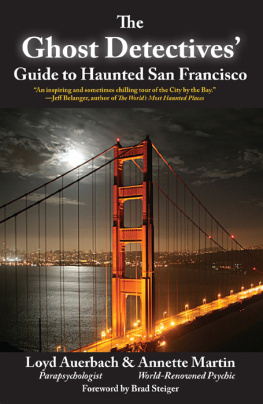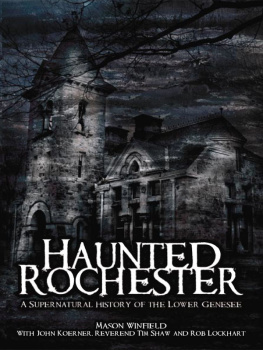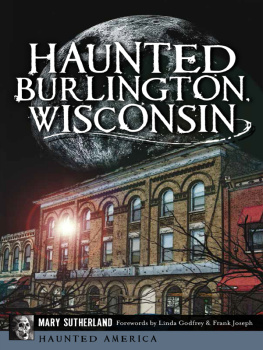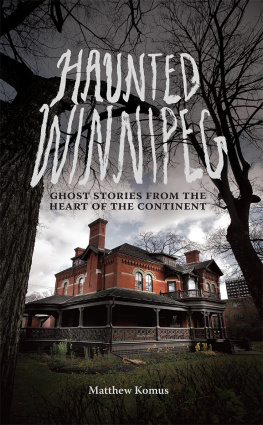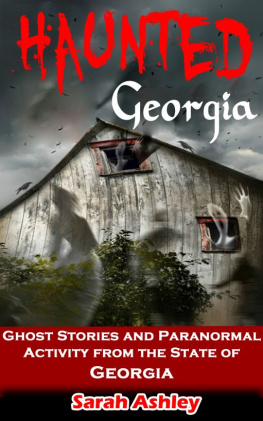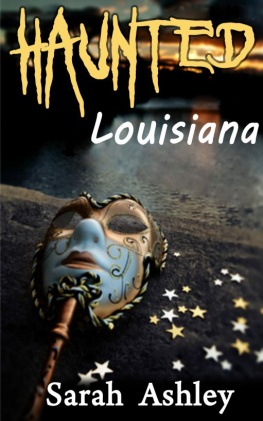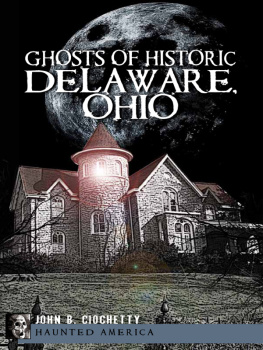

Published by Haunted America
A Division of The History Press
Charleston, SC 29403
www.historypress.net
Copyright 2010 by Lynne Sturtevant
All rights reserved
First published 2010
Second printing 2011
Third printing 2012
e-book edition 2012
Cover image: Washington County Courthouse. Photo by Michael Pingrey.
ISBN 978.1.61423.555.2
Library of Congress Cataloging-in-Publication Data
Sturtevant, Lynne.
Haunted Marietta : history and mystery in Ohios oldest city / Lynne Sturtevant.
p. cm.
print edition ISBN 978-1-59629-948-1
1. Ghosts--Ohio--Marietta. 2. Haunted places--Ohio--Marietta. I. Title.
BF1472.U6S88 2010
133.10977198--dc22
2010026636
Notice: The information in this book is true and complete to the best of our knowledge. It is offered without guarantee on the part of the author or The History Press. The author and The History Press disclaim all liability in connection with the use of this book.
All rights reserved. No part of this book may be reproduced or transmitted in any form whatsoever without prior written permission from the publisher except in the case of brief quotations embodied in critical articles and reviews.
The Supernatural is the Natural, just not yet understood.
Elbert Hubbard
CONTENTS
THE MOST HAUNTED TOWN IN OHIO
Intelligent spirits, residual vibrations, emotionally charged objectsthe supernatural meanders through our lives largely unnoticed. The paranormal is part of our environment, but in most places the din of traffic, construction equipment, car alarms, jackhammers and sirens renders the more subtle vibrations of the unseen world undetectable. Add the energetic interference of microwaves, GPS satellites, cellphones and radio and TV signals and its a wonder anyone can sense the supernatural at all.
But things are different in Marietta. The echoes of the past are strong here, and the spirits of those who lived long ago remain. They inhabit a dimension beyond timethe realm of dreams and memory, of history and imaginationand their stories are as close as a whisper for those who are willing to listen.
IN THE BEGINNING
It all started over tankards of ale. The year was 1786, and March was roaring into Boston like an angry lion. Sleet pelted the windows of the Bunch-of-Grapes Tavern as the soaked Revolutionary War veterans took their places around the table. General Rufus Putnam called the meeting to order, and the boisterous group quickly quieted down. Putnam still commanded respect.
Five years had passed since the British surrender at Yorktown, and the war was fresh in the soldiers minds. For some, its images would never fade. But the former comrades in arms had not gathered on this wild and windy night to rehash skirmishes with the redcoats, toast acts of American patriotism or remember their fallen brothers. They had come to the Bunch-of-Grapes to talk business.
Before the night was over, the veterans had created the Ohio Company of Associates and formulated a plan to migrate as a group and to establish a settlement in the western wilderness. There was much to do. They needed to issue stock, raise money, recruit new members and obtain legal titles and authorizations from the Continental Congress. The list of tasks seemed almost endless. Undaunted, they ordered another round of ale, elected Rufus Putnam as superintendent of their new organization and got to work.
Less than two years later, forty-eight members of the Ohio Company boarded oxcarts in Ipswich, Massachusetts, and headed west. When the group reached Pittsburgh, they transferred to a flat-bottomed boat appropriately named the Adventure Galley and sailed down the Ohio River. In April 1788, they arrived at the mouth of the Muskingum River. With Putnam in the lead, the men climbed ashore and founded the first settlement in the Northwest Territory. They named it Marietta to honor French queen Marie Antoinettes support of the colonists during the American Revolution.
Putnam and his associates assumed that Marietta would be the first choice for capital of the Northwest Territory. But they did not plan to accept that honor. The men of the Ohio Company had a more ambitious goal. They wanted Marietta to become the capital of the United States, and they planned the city accordingly.
They laid out the town in a grid pattern, like a New England village, with an eye to grand public spaces, education and culture. The group took steps to protect the ancient earthworks that dotted the area and even gave them imposing Latin names. The pyramid mound became Conus because of its shape. The largest platform mounds were named the Capitoleum and the Quadranou, and the walled walkway from the Muskingum River was christened the Sacra Via. They didnt stop there. The settlers named the fort they constructed to protect themselves from the increasingly hostile Native Americans the Campus Martius, and the muddy little creek that ran through the center of what would become downtown became the Tiber.
Marietta wasnt chosen to be capital of the United States; it didnt become the capital of the Northwest Territory, either. It didnt even become the capital of Ohio. But it did thrive and develop into a pleasant and successful town. It has survived Indian wars, epidemics, devastating floods, tornados and fires. Its citizens have fought and died in every war. The town has produced business tycoons, politicians, social reformers, diplomats, musicians and heroes who risked their lives to shelter fugitive slaves. It has also spawned con artists, child molesters, bank robbers, philanderers and men who drowned their wives in the Ohio River.
Marietta is a paradox. A lot has happened here, and nothing has changed. The towns layout is essentially the same as it was in the days of the Ohio Company. New buildings have been added, of course, and old ones have disappeared, but Mariettas main features have remained remarkably stable through the years. If Rufus Putnam dropped in for a visit, he could easily find his way around.
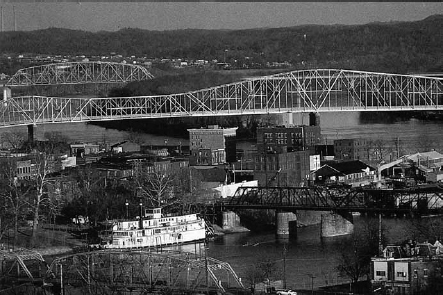
Marietta in the 1980s. Courtesy of the Washington County Historical Society.
The accumulated emotional energy of the past remains, too. The murders, the suicides, the river disasters, the hopes, the broken hearts, the disappointmentsall the joys and tragedies of those who lived and died here float just beneath the surface of everyday life. The energy bubbles up all over town, sometimes manifesting in the most unexpected places and ways. Supernatural encounters, unexplained incidents and paranormal phenomena are so common that theyre almost routine. Almost, but not quite.
THE SUPERNATURAL DECODED
Ghost stories and reports of paranormal activity are not the same. Ghost stories are fictional creations that include a ghost or ghosts as characters. Ghost storiesgood ones, in any caseare dramatically satisfying. They have beginnings, middles and ends. Many feature surprise closing lines, such as: And the next morning we found out he had died in 1899! Any story that is too perfect, has a moralistic message or tone or involves a stock character (such as a spectral hitchhiker, a girl who needs a ride to the prom or a chain-rattling skeleton) is suspect.
Paranormal incident reports, on the other hand, dont have a dramatic arc. They have something much more compelling: the ring of truth. A typical report goes like this: I felt weird when I walked into the room, like someone was watching me, even though I was sure I was alone in the house. I sat down on the couch and reached for my book, but it wasnt on the coffee table. The odd thing is, I know I left it there. I distinctly remembered putting it on the table about an hour earlier. I looked everywhere, but it didnt turn up, so I went for a walk. When I came home, my book was on the coffee table, right where it should have been. I swear it wasnt there before I went out.
Next page

